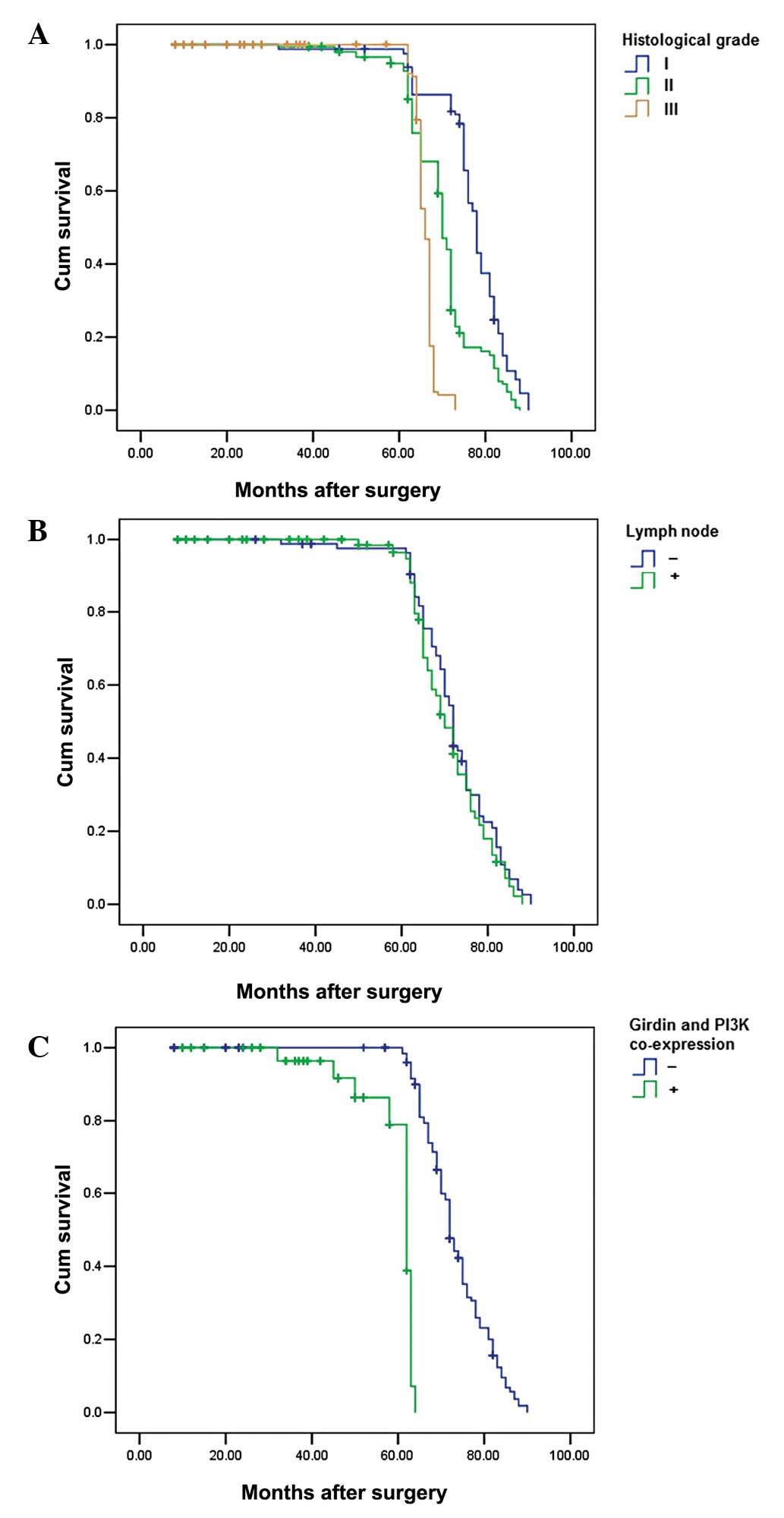Clinical implications of Girdin and PI3K protein expression in breast cancer
- Authors:
- Published online on: March 12, 2013 https://doi.org/10.3892/ol.2013.1249
- Pages: 1549-1553
Metrics:
Total
Views: 0 (Spandidos Publications: | PMC Statistics:
)
Total PDF Downloads: 0 (Spandidos Publications: | PMC Statistics:
)
Abstract
The aim of this study was to investigate the correlation between Girdin and PI3K in breast cancer stem cells and the clinical implications of the co-expression of these two proteins in breast cancer patients. CD44+/CD24- tumor cells from the MD-231 cell line were sorted by flow cytometry. The expression status of Girdin and PI3K proteins was detected using western blotting and immunohistochemical staining. The relationship between Girdin and PI3K proteins and clinicopathological parameters was analyzed in 820 breast cancer patients. Girdin and PI3K proteins were more highly expressed in CD44+/CD24- tumor stem cells compared to the control group and Girdin and PI3K proteins were co-immunoprecipitated in the MD-231 cell line. Of the 820 enrolled breast cancer patients, Girdin and PI3K proteins were expressed in 295 (35.98%) and 492 (60.00%) cases, respectively. There were 162 (19.76%) cases which co-expressed Girdin and PI3K proteins. Univariate and multivariate analyses indicated that the co-expression of Girdin and PI3K proteins correlated with histological type, metastatic nodes and distant metastasis (P=0.01, 0.001 and 0.001, respectively). After analyzing survival rates, cases with Girdin and PI3K co-expression were shown to attain a significantly increased distant metastasis rate and poorer postoperative, disease-specific survival compared to those with Girdin and PI3K co-expression (P=0.001). In the Cox regression test, Girdin and PI3K co-expression was detected as an independent prognostic factor (P=0.001). Girdin may regulate the biological behavior of breast cancer via the PI3K/Akt/mTOR pathway, and thus, serve as a potential new target for breast cancer treatment.













